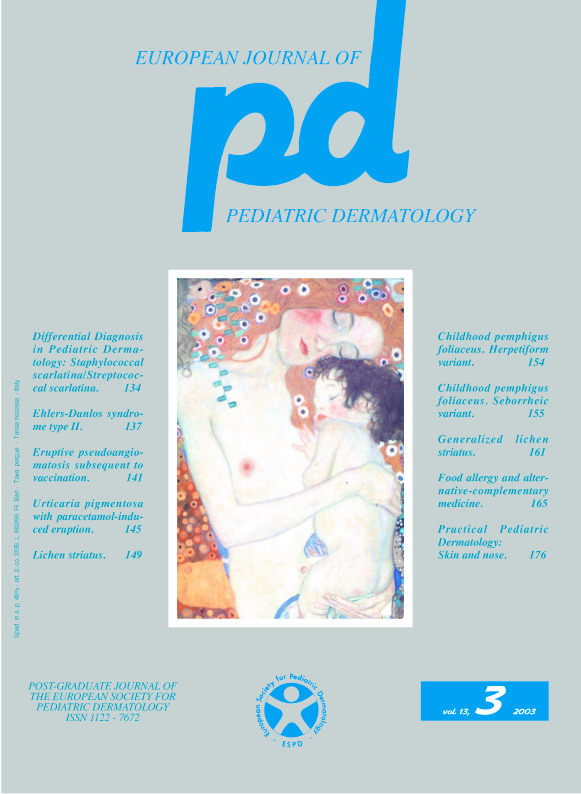Staphylococcal scarlatina/Streptococcal scarlatina.
Downloads
How to Cite
Bonifazi E., Cutrone M. 2003. Staphylococcal scarlatina/Streptococcal scarlatina. Eur. J. Pediat. Dermatol. 13 (3):134-35.
pp. 134-135
Abstract
Both streptococcus and staphylococcus, thanks to their pyrogenic and vasodilating toxins, can be responsible for fever and generalized reddening of the skin. Clinical features like those, when associated to an enanthem and cultures growing group A β-hemolytic Streptococcus, lead to diagnose streptococcal scarlet fever. On the other hand, when there is no enanthem and bacteriological cultures from the pharynx do not grow group A β-hemolytic Streptococcus, drug or virus exanthem is often suspected and antihistaminics or corticosteroids are given, without taking into account that clinical features superimposable to streptococcal scarlet fever can be due to Staphylococcus aureus and its toxins. Staphylococcal scarlatina is an initial or mild variant that can result in more severe toxic syndromes, such as staphylococcal scalded skin syndrome and toxic shock syndrome.Keywords
Staphylococcal scarlatina, Streptococcal scarlatina

